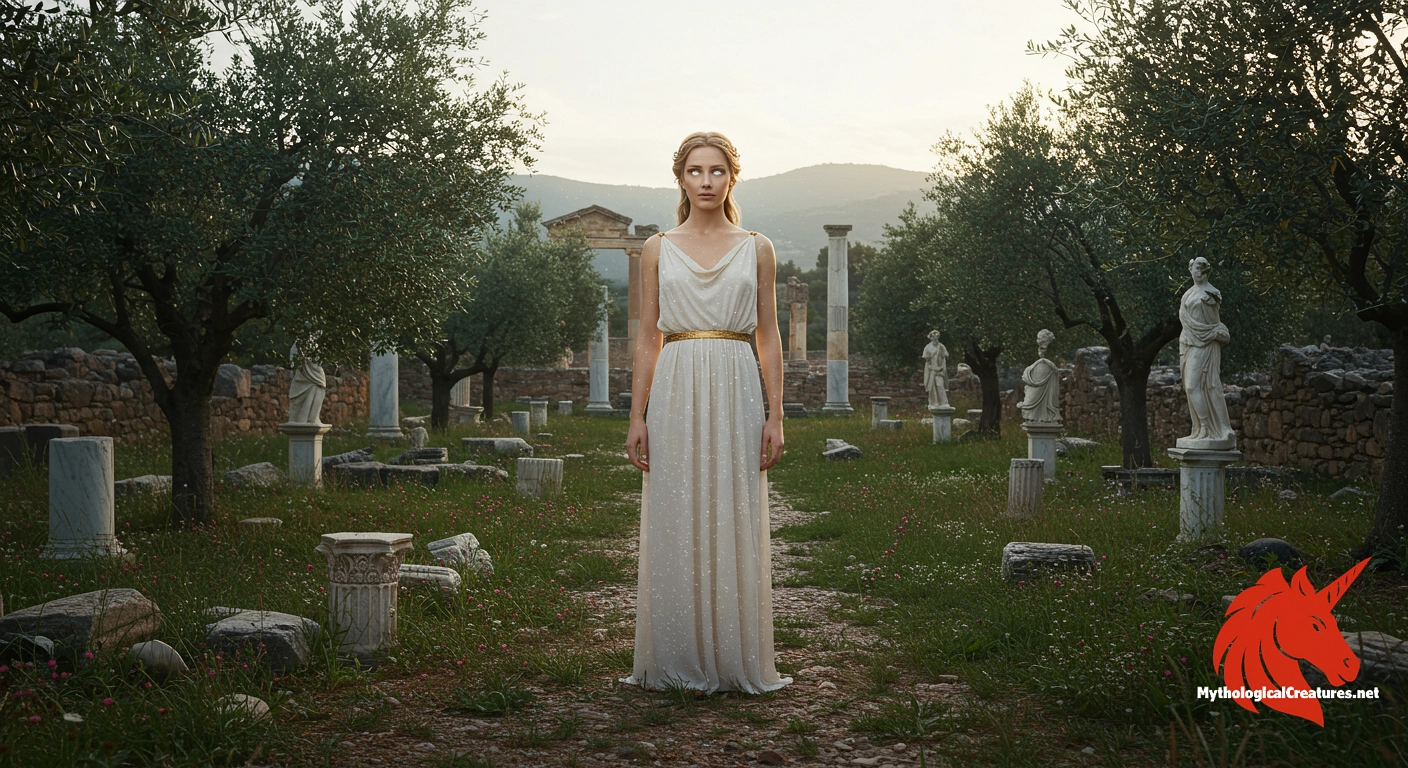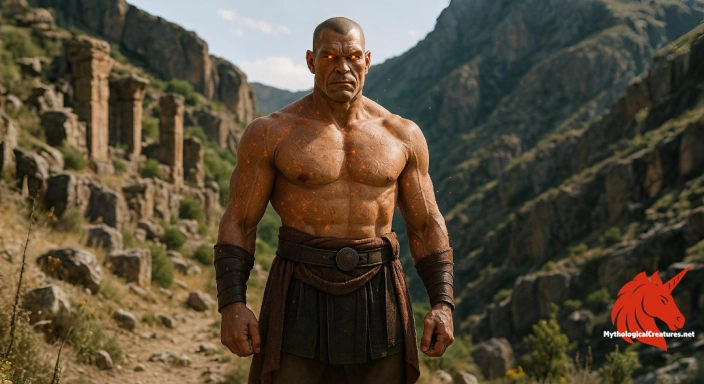Pandora: Pandora is the first human woman created by the gods in Greek mythology.

Pandora
Pandora - Pandora's myth explains the origin of evils and human suffering, influencing both art and theology.
Origins & First Encounters
Pandora emerges as one of the most intriguing figures in Greek mythology, born from the divine craftsmanship of Hephaestus at the behest of Zeus. Her creation signalled the arrival of a being endowed with an assortment of gifts from the gods, which imbued her with an enigmatic aura and a subtle hint of danger. Born into a world meticulously balanced between divine order and mortal error, she became the first woman whose very existence challenged the pristine order of creation. Her myth encapsulates themes of innocence, curiosity, and the unforeseen consequences that arise when the divine and mortal realms intersect. The story of Pandora not only provided an early explanation for the emergence of human suffering but also highlighted the complex interplay between beauty and calamity. Her tale, layered with both benevolence and treachery, has resonated deeply throughout ancient and modern storytelling traditions. As the container of untold evils, her actions have often been interpreted as a profound allegory for the human condition. Across ancient texts and artworks, her character has been a perpetual source of fascination and caution. Each retelling of her myth underscores the delicate balance between hope and despair inherent in the human spirit.
Source Texts & Tale Variants
Hesiod’s writings form the cornerstone of Pandora’s myth, providing one of the earliest literary accounts that meld the divine with the mortal. His texts describe her as a composite of both beauty and complexity, crafted deliberately to introduce a duality into human life. Over time, her narrative was enriched by an array of literary and artistic interpretations that expanded on the original details offered by Hesiod. Vase-paintings, sculpture, and ancient inscriptions have all contributed to a mosaic of her story, each medium embellishing different facets of her character. Diverse story variants detail her role as the inadvertent catalyst for the spread of misfortune, emphasising the irony in her seemingly innocent nature. The variations capture subtle differences in emphasis—some recount the gravity of her transgression while others hint at a tragic sense of inevitability. Oral traditions further diversified her portrayal, blending regional beliefs with the established myth. As these narratives intertwined over centuries, Pandora’s myth stood as a multifaceted tale, rich with symbolic depth and cultural significance. Through these varied sources, her story has continued to intrigue and provoke thought regarding human frailty and the price of unbridled curiosity.
Form & Powers
Though ancient texts offer only fleeting descriptions of Pandora’s physical form, artistic depictions have painted a vivid picture of her appearance. She is often rendered as possessing a graceful and delicate beauty that hints at both her divine origin and mortal frailty. Classical art portrays her with soft, rounded features and expressive eyes that seem to reflect the tumult of her inner life. Her flowing hair and finely detailed garments exude an elegance that is both timeless and emblematic of her crafted perfection. In many sculptures and vase paintings, subtle attributes such as a poised stance and measured gestures communicate her dual nature of allure and inherent danger. Some representations include inscriptions of her alternative name, Anesidora, which enrich the visual narrative with layers of symbolic meaning. Regional artworks sometimes vary in their portrayal, with some emphasising her innocence and others highlighting a more enigmatic, almost melancholy quality. The careful balance in her depiction between beauty and portent contributes to her lasting allure in the art of antiquity. Through these visual cues, Pandora’s physical representation attests to her status as a character shaped by both divine artistry and human interpretation.
Regional Faces
Pandora’s myth found fertile ground across different regions of the ancient Mediterranean, with each culture colouring her story with local nuances and traditions. In parts of Greece, she was revered as a symbol of the mysterious and unpredictable forces that govern fate, while elsewhere her image was intertwined with local rites and seasonal cycles. Artisans in various regions adapted her portrayal to reflect the local aesthetic, sometimes accentuating her beauty and other times her tragic dimensions. In Eastern Greek traditions, she could be seen as a bearer of hidden wisdom and the paradox of life’s dual nature, merging both benevolent and malevolent qualities. Near Eastern and Aegean communities often incorporated her myth into broader cultural narratives that celebrated the ambiguity of divine intervention. Regional festivals and artistic motifs would sometimes present her as both a cautionary figure and a harbinger of renewal, highlighting the cyclical pattern of destruction and rebirth. The local adaptation of her story often mirrored the societal concerns of each area, reflecting regional values and interpretations of fate. Such regional diversity not only enriched the myth’s complexity but also ensured that Pandora remained a dynamic and ever-relevant symbol in various cultural landscapes. Across these regions, her narrative continued to evolve, mirroring the versatility of the human experience itself.
Cultural Parallels
Pandora’s tale shares striking thematic similarities with other foundational myths, drawing parallels with figures such as Eve from the Abrahamic tradition. Both characters are seen as the progenitors of a new, more complex human experience, initiating narratives that intertwine innocence, transgression, and subsequent consequence. In contrasting these tales, one finds a shared emphasis on the perils of curiosity and the irreversible impact of defying a divinely ordained order. Her story resonates with later myths that explore the dual nature of creation and destruction, offering a profound testament to the ambiguities of human existence. Much like other archetypal figures, Pandora embodies the notion that beauty and danger are often intertwined, a concept that recurs in a variety of cultural legends. Her myth has been compared to other narratives that examine the dichotomy between the idealised state of innocence and the corrupting influence of transgression. These cross-cultural connections reveal a common human preoccupation with the origins of suffering and the complexities of moral choice. By invoking similar themes to those found in diverse mythologies, Pandora’s narrative creates a bridge between ancient Greek thought and broader global mythic traditions. This enduring parallel invites continual reinterpretation and cross-disciplinary analysis, reinforcing her status as a timeless symbol of human vulnerability and resilience.
Legacy & Modern Evolution
The evolution of Pandora’s myth from ancient times to the modern era illustrates a compelling transformation in cultural perception and artistic expression. Early portrayals fixed her as a cautionary emblem for the unforeseen consequences of mortal curiosity, a narrative that resonated strongly in the context of early Greek literature. The Renaissance period, in particular, saw a revival of her image, with artists and writers reinterpreting her story to reflect contemporary debates about the nature of beauty, sin, and human frailty. In the modern era, Pandora has been re-examined through diverse lenses, including feminist critiques and psychological analysis, which have sought to uncover the nuances often overshadowed by her initial portrayal as a bringer of evil. Literary and cinematic adaptations have recast her as a more complex, sometimes sympathetic figure, highlighting the tragic irony of a life marked by both hope and despair. Contemporary discussions often use the term "Pandora’s box" as a metaphor for actions with far-reaching, unforeseen impacts in technological and social contexts. Her myth continues to inspire novel interpretations, ranging from academic treatises to mainstream popular culture, each echoing the timeless tension between creative potential and destructive mishap. The enduring appeal of her story lies in its capacity to capture the multifaceted nature of human existence, a dialogue between light and shadow that remains ever-relevant. Thus, Pandora endures as a dynamic cultural icon whose legacy evolves in step with the shifting contours of human thought and creativity.
Interesting Fact
Pandora's tale is often compared to biblical narratives such as the story of Eve, highlighting cross-cultural themes of creation, temptation, and the origins of human suffering.
Quick Creature Info
Origin:
Features:
Associations:
Our Mythic Legendary Rating:

Also Sometimes Known As:
Habitat:
Physical Attributes:
Abilities:
Behavior:
Weaknesses:
Lore:
Related Creatures, Tales or Lore
- EEve
- LLilith
References
Discover Another Mythical Legend You May Not Have Heard Of?
Uncover the mysteries of ancient folklore and expand your knowledge of legendary beings from cultures around the world.
Dare to Meet the Vahagn....
Mythical Disclaimer: The images and data on this site are derived from various historical and literary sources, but we have found that many myths often have multiple versions and interpretations across references, sometimes contradictory. As a result, these creature depictions are artistic interpretations—imaginative blends of folklore, legend, and a dash of AI guesswork. Because creature descriptions vary widely, our illustrations and accompanying information represent our best effort to honor mythology while bridging creative gaps. Enjoy these interpretations—just remember, we've done our best to respect the stories and validate available data, but in the realm of mythology, details often shift, imagination leads the way, and nothing is ever set in stone!
Curated by the Mythological Creatures Team (rev. May 2025)
